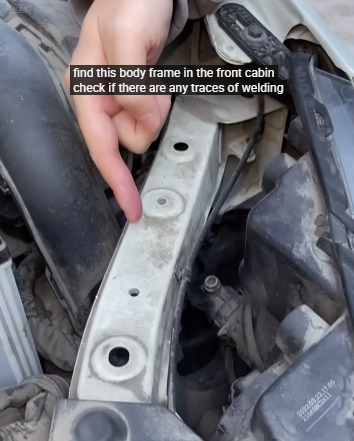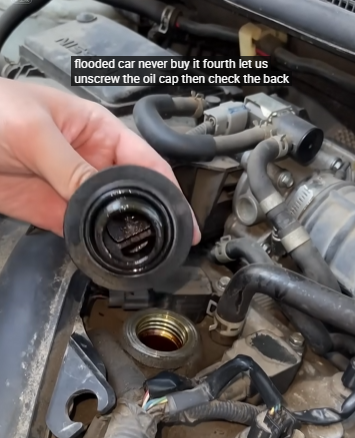
Buying a used car can be a smart financial decision, but it also comes with risks. Without proper knowledge, you might end up with a vehicle that has hidden mechanical issues, a shady history, or a price tag that far exceeds its actual value. Sellers—especially dishonest ones—may try to hide problems to make a sale. This is why it’s crucial to thoroughly inspect any used car before buying. Here’s a detailed guide on how to check a used car to avoid being cheated.
1. Start with Research
Before you even go to see a car, do your homework. Research the car’s make, model, and year. Find out the average price range for that model in your area. Websites like Kelley Blue Book, Edmunds, or local classifieds can help you estimate the fair market value. Also, look up common issues for that specific model year. This will prepare you to ask smart questions and negotiate confidently.

2. Check the Vehicle History Report
Always ask for the car’s Vehicle Identification Number (VIN) and run a history report through services like Carfax or AutoCheck. This report can reveal:
- If the car has been in any accidents
- If it has a salvage or rebuilt title
- Odometer discrepancies
- Service and maintenance records
- Number of previous owners
- If it was ever declared a total loss by insurance
Avoid any vehicle with red flags like flood damage or a history of severe accidents.
3. Inspect the Exterior
Take a walk around the vehicle and examine the body carefully. Here’s what to look for:
- Rust: Small rust spots may not be serious, but larger areas can weaken the vehicle’s structure.
- Paint Mismatch: Different shades of paint could indicate repaired accident damage.
- Dents and Scratches: Check for inconsistencies that might not have been reported.
- Tire Wear: Uneven wear may point to suspension or alignment problems.
- Lights and Lenses: Make sure all headlights, brake lights, and indicators are working and free of cracks or moisture.

4. Inspect the Interior
Next, examine the interior of the car. While wear and tear are normal, excessive damage can be a warning sign.
- Seats and Upholstery: Check for tears, stains, or unusual odors (which could indicate water damage or mold).
- Dashboard Warning Lights: When you start the engine, all dashboard lights should briefly light up and then turn off. If any stay on (especially the check engine light), that’s a concern.
- Air Conditioning and Heat: Make sure the HVAC system works properly in all modes.
- Odometer Reading: Compare the mileage with the wear of the pedals, steering wheel, and seats. Excessive wear with low mileage might suggest odometer tampering.
- Infotainment and Electronics: Test the radio, GPS, windows, locks, and other electrical components
5. Check Under the Hood
Even if you’re not a mechanic, you can still do a basic check under the hood:
- Oil: Pull out the dipstick and check the oil’s color and level. Dirty, dark oil could mean the vehicle hasn’t been maintained.
- Transmission Fluid: Should be pinkish and clean, not dark or burnt-smelling.
- Coolant: Look in the reservoir to ensure it’s full and free of rust or debris.
- Belts and Hoses: Should be in good condition, not cracked or brittle.
- Leaks: Look for signs of leaking oil, coolant, or transmission fluid under the car.

6. Look Underneath the Car
Crouch down and inspect the undercarriage. Be on the lookout for:
- Rust: Surface rust is common, but avoid cars with deep corrosion, especially on structural parts.
- Exhaust System: Check for holes, rust, or a loose muffler.
- Frame Damage: Bends or weld marks could suggest an accident and improper repair.
7. Take It for a Test Drive
A test drive is one of the most important parts of evaluating a used car. Pay attention to the following:
- Engine Performance: The car should start easily, idle smoothly, and accelerate without hesitation.
- Transmission: Whether automatic or manual, gear shifts should be smooth and without delay.
- Steering and Handling: The car should drive straight without pulling to one side. Listen for clunks or squeaks when turning.
- Brakes: Test braking at different speeds. The car should stop evenly without vibration or noise.
- Noise: Listen for any unusual sounds from the engine, suspension, or tires.
Try to drive on different types of roads—highways, city streets, and bumpy surfaces—to see how the car performs in various conditions.
8. Have a Mechanic Inspect It
Even if everything seems fine, always have the vehicle inspected by a trusted mechanic. A pre-purchase inspection can uncover hidden problems that aren’t visible to the untrained eye. The small cost of this service could save you thousands in repairs later.

9. Verify Ownership and Paperwork
Ask to see the title and make sure the seller’s name matches. The title should be clean (not salvaged or rebuilt) and free of liens. Review the registration to confirm it’s up to date. Be cautious of sellers who avoid paperwork or insist on cash-only transactions without a proper bill of sale.
10. Watch Out for Common Scams
Unfortunately, scams are common in the used car market. Here are a few to be aware of:
- Title Washing: Hiding a salvage title by moving the car across states.
- Curbstoning: Unlicensed dealers posing as private sellers.
- Odometer Rollback: Reducing the mileage reading to increase value.
- Fake Escrow Services: Trick buyers into sending money to fake online payment sites.
Always meet the seller in person, in a public place, and never wire money or send payment before seeing the car.
11. Negotiate Smartly
After completing your inspection and gathering all the facts, you’re in a strong position to negotiate. Point out any flaws or needed repairs and use them to lower the asking price. If the seller is reluctant to budge or pressuring you into a quick sale, don’t hesitate to walk away.

Final Thoughts
Buying a used car doesn’t have to be a gamble if you take the right steps. Doing your research, inspecting thoroughly, test driving, and getting a mechanic’s opinion are all essential in protecting yourself from scams and surprises. Don’t rush the process—take your time and be confident in your judgment. With caution and preparation, you can find a reliable car that fits your needs and budget without falling victim to dishonesty.
Always remember: it’s better to miss a good deal than to buy a bad car.



